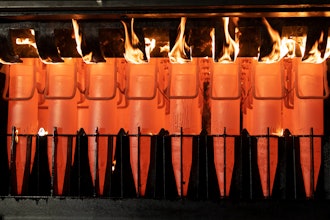(AP) — Cold winter weather appears to have cut into homebuilding in the Midwest and Northeast, causing the pace of construction to tumble in January.
Housing starts slipped 3.8 percent last month to a seasonally adjusted annual rate of 1.1 million homes, the Commerce Department said Wednesday. A sharp 12.8 percent decline in construction in the Midwest and a 3.7 dip in the Northeast propelled the broader decrease, with construction also falling in the South. It was nearly unchanged in the West.
The setback occurs after months of improvement for the real estate market. For all of 2015, builders broke ground on 1.1 million properties, the most since 2007 when the housing bubble was beginning to burst into a broader recession.
"Seasonal weather and the recent uncertainty in the stock market are likely explanations for the decline in January housing starts," said Bill Banfield, vice president of mortgage provider Quicken Loans. "Taking a step back to look at year-over-year growth, we continue to see healthy and steady gains."
Construction firms also see further room for expansion. Building permits came in at an annual rate of 1.2 million in January, a slight 0.2 percent dip from December but a 13.5 percent increase from a year ago.
The steady demand for new homes reveals a sharp split in the U.S. economy. Global headwinds, such as uncertainty in China and volatile financial markets, have disrupted overall growth. Yet strong hiring and low mortgage rates have boosted the housing sector as more Americans buy new houses or sign leases for expensive apartments.
The residential market continues to recover from the dramatic crash brought about subprime mortgages nearly a decade ago. Home construction remains well below its annual pace of roughly 1.5 million during the 1990s, a reflection of both higher housing costs and the damaged financial credit that remains more than 6-1/2 years after the recession officially ended.
And unlike the housing bubble when builders focused on owners, the industry has shifted more of its efforts to address an increase in renters. Multi-family construction — which includes apartment buildings — reached its highest levels of starts last year since 1987.
Homebuilders expect the demand from buyers to persist, yet their optimism about sales growth has become a bit more tempered leading up to the start of the spring home-selling season next month.
The National Association of Home Builders/Wells Fargo builder sentiment index released Tuesday fell to 58 in February, a decrease of three points from January. The index had stayed in the low 60s since June. Readings above 50 indicate more builders view sales conditions as positive.






















